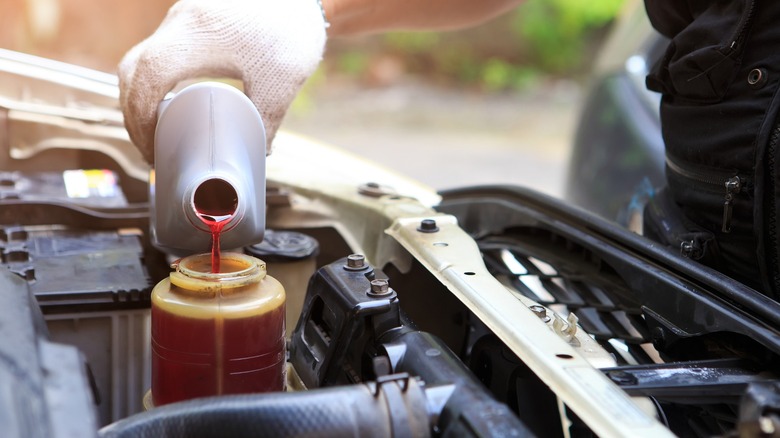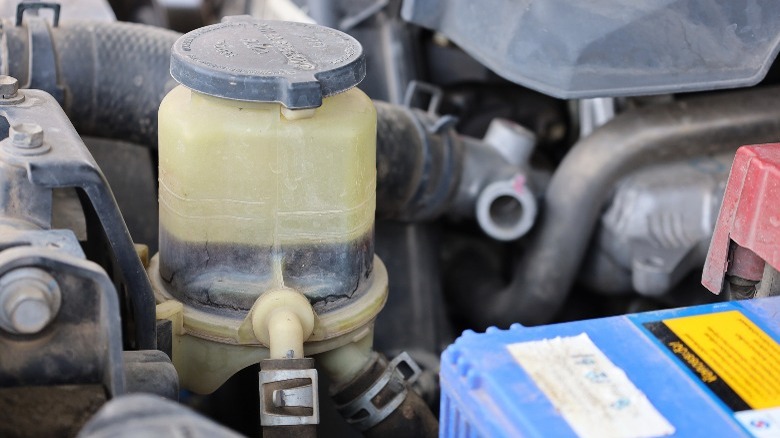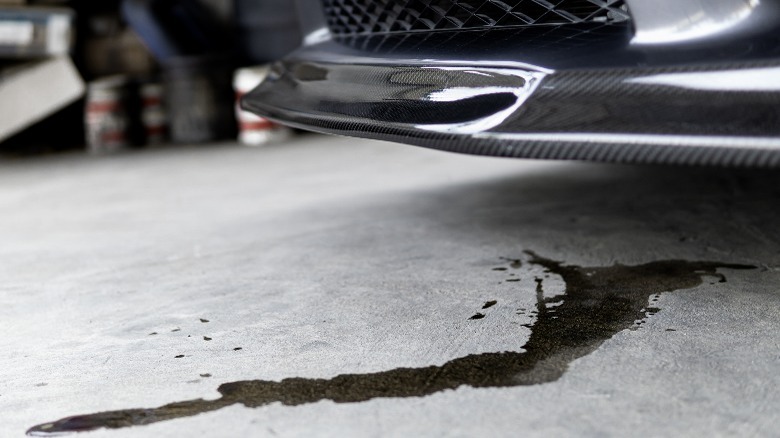4 Signs You Need To Service Your Power Steering System
If you've ever driven an older vehicle without power steering, you probably understand just how important power steering systems are for modern cars. These components allow us to turn the steering wheel with minimal effort, thanks to a complex hydraulic system and a series of interconnected parts. While today, most newer vehicles utilize electric power steering systems, hydraulic systems are still incredibly common. Thousands of vehicles produced during the '80s, '90s, and early 2000s are still cruising the streets, as well as a handful of new vehicles still built with older hydraulic systems.
Like most of your car's components, hydraulic power steering systems require regular maintenance. Generally, you should replace your power steering fluid every 40,000 to 80,000 miles, depending on your car's make and model. However, in between fluid changes, it's important to monitor the system and your vehicle's performance. Doing so can help you stay on top of any potential issues and help keep your car healthy. Some of the things you need to pay attention to include not only your power steering fluid level, but also its condition. The way your steering wheel feels as you turn it from side to side, and any strange sounds your vehicle makes. Keeping an eye out for signs that your power steering system needs service can extend the system's life and save you expensive repair bills. But what are those signs? From strange sounds to dirty fluid and a stiff steering wheel, let's dive in and explore the four most common signs that you need to service your hydraulic power steering system.
Your power steering fluid is dirty
When fresh and healthy, most hydraulic power steering fluid should be a deep red color. However, over time, the fluid can degrade and accumulate contaminants. If it begins to look muddy, bubbly, chunky, or even black, that's a sign that you need to replace the fluid as soon as possible.
These changes in appearance occur due to a few reasons. The most innocuous reason for power steering fluid to change colors is, simply, age. Over time, the fluid degrades and breaks down, and it absorbs dirt, dust, and other contaminants that manage to get into the system. Brown or muddy looking power steering fluid on its own isn't usually a cause for great concern, but it does mean you need to replace the fluid as soon as possible. Other colors and conditions are more serious.
If your fluid looks milky or foamy, it may be a sign that water is seeping into the system, while shiny metal shavings may indicate deeper problems like a faulty power steering pump. Any time you notice that your power steering fluid is discolored, bubbly, or chunky, you need to flush the system at the bare minimum. Allowing dirty or degraded fluid to continue circulating through the system can cause more serious and more expensive damage. If you notice more severe signs, like metal shavings or foam, or extremely dark colors, you may want to ask your mechanic to perform a deeper inspection of the power steering system.
You hear strange sounds when you turn the wheel
Another one of the most common signs that something is wrong with your car's power steering system is a noisy steering wheel. Under normal conditions, your steering wheel should turn smoothly and quietly. However, if your hydraulic power steering fluid is low or contaminated, or there are more severe issues with the system, you may notice that the wheel makes a high-pitched squealing or groaning noise as you turn it. When caused by power steering issues, this problem is usually due to the power steering pump struggling to work. Without the proper amount of clean fluid, the pump can't work as efficiently, and it also won't receive the correct amount of lubrication. Both of those factors can contribute to extremely loud noises when turning the wheel.
That said, there are other issues that can cause your car to squeak or squeal while turning. If you experience this issue yourself, one of the first things you should do is check your power steering fluid level and condition. If the fluid looks good, you may still have a power steering issue, but it could be deeper within the system. You can't ignore these noises, and if you experience them while driving your car, the smartest move is to visit a professional mechanic for an inspection.
The steering wheel is difficult to turn
Your car's hydraulic power steering system works by using pressurized fluid to help you turn the wheel. A lot of parts contribute to that function, including a pump, rotary valve, rack and pinion gear, and the hydraulic fluid itself. If any of those parts malfunction or become damaged, the system won't be able to work properly, and, in some cases, it may cease functioning altogether. As the power steering system loses its ability to pressurize fluid and help you turn the wheel, it will become increasingly difficult for you to steer your car. If the situation progresses far enough, you may completely lose your power steering and be forced to drive the old-fashioned way — using a lot of arm power.
Many power steering system problems can cause this issue, and the potential culprits range from inadequate or poor quality fluid to a worn-out drive belt, faulty power steering pump, or a broken rack and pinion gear. In terms of severity, the most minor issues that may cause your steering wheel to become stiff are too little power steering fluid or a worn-out drive/serpentine belt. Those issues are relatively minor and cheap to fix. On the other hand, a busted rack and pinion gear is extremely serious and could cost thousands of dollars to repair. If you experience a stiff steering wheel and your power steering reservoir is full of clean fluid, you should visit a professional repair technician for an inspection immediately.
You have fluid leaks
You're pulling your car out of the driveway when you see it — a large, damp spot on the ground where your vehicle was just parked. No one likes to see their car leaking fluids. It can be terrifying, and it's not always evident what type of fluid is leaking or where exactly it's coming from on the vehicle. Even though we all hate to see our cars dripping fluid, it's vital that we don't ignore leaks when they appear. Inspecting things like the color, consistency, and smell can help us identify the type of fluid and its origin. Doing so is a great way to avoid an expensive trip to the repair shop for what may turn out to be harmless condensation.
Power steering fluid leaks are one of the trickier automotive leaks to identify. That's largely due to the fact that hydraulic power steering fluid looks very similar to transmission fluid — in some cases, these fluids are exactly the same. That said, there are a couple of ways to help you differentiate between the two. Both power steering fluid and transmission fluids are usually bright red, and they have similar odors and consistencies. However, power steering fluid leaks tend to leave puddles toward the front of your vehicle. A leaking rack and pinion gear may leave drops of fluid farther back, but even then, the puddles should correspond with the area between your car's front tires.
Transmission fluid leaks, on the other hand, will typically leave puddles more toward the middle of your vehicle. Power steering fluid leaks may leave oily grime around your engine bay, while transmission leaks tend to leave the undercarriage dirty. All of that said, the best way to identify a leak is to visit a professional mechanic for inspection.




